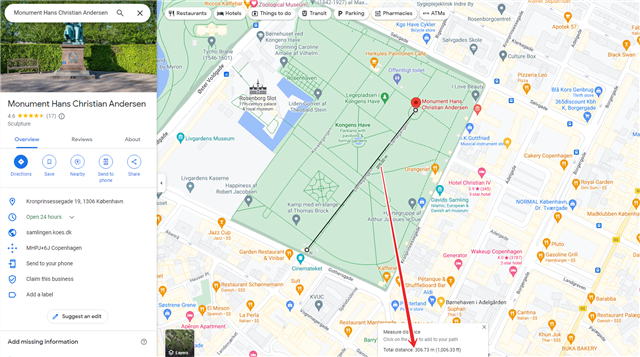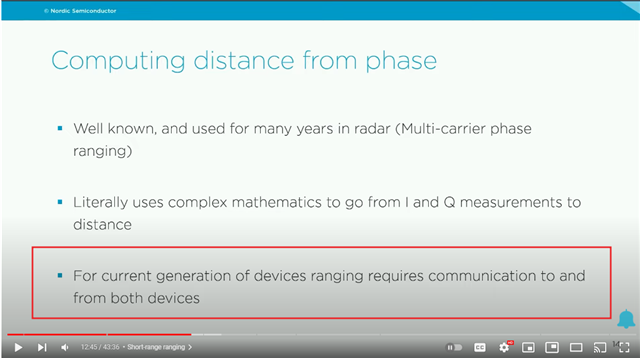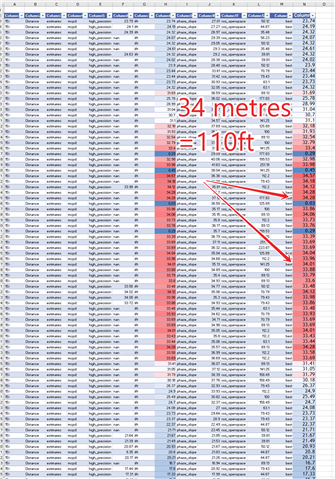NRF52833 with NCS 2.4.0
I've added basic Distance Measurement support by adapting the nrf_dm example, but I'd like to get rid of the scanning and I also want to extend the range to a reliable 100ft (33m).
I found the RTT (round trip time) option which looks useful. My distance measurement doesn't need to be precise. But I would like to find a more long distance communication method to to set up the DM synchronisation.
My product currently uses periodic adverts with CODED phy to send 12 periodic adverts per second which gives me an amazing range of over 300m. (see pic below)

Since periodic adverts are sent with a fixed interval, they seem like an ideal way to maintain DM synchronisation between senders and receivers. However I can't find a way to get a callback on the sender when the periodic advert is sent.
I get a callback when the periodic advert is received, so maybe I can use this to call dm_request_add on the receiver, but I also need to call dm_request_add on the sender at the same time.
I tried using the bt_le_ext_adv_cb.sent callback. But it's never called (It actually fires when the advertising set ends, rather unhelpfully, and rather poorly named!)
Is there a way to get a callback when a periodic advert is sent?
Or is there another way to setup the DM synchronisation with a similar range to CODED periodic adverts?
My receiver is pre-installed to know the address of it's sender. And it's only the receiver that needs to know the distance.
There are callbacks that look promising for PAWR (periodic advertising with responses) which I've not tried yet.
Is there an easy way to do this that I've just not considered?
Thanks for your help (and for making this fantastic library!)
Kind regards,
-Jason





